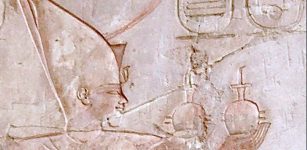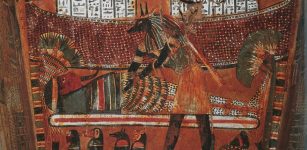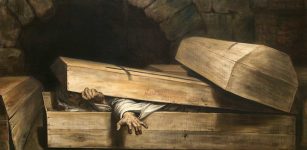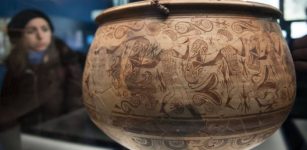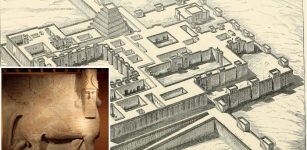On This Day In History: The ‘Canterbury Tales’ Read For The First Time At Richard II’s Court – On Apr 17, 1397
AncientPages.com - On April 17, 1397, Geoffrey Chaucer (1343 – 1400) was recorded to have given the first presentation of his Canterbury Tales at the English royal court of Richard II.
Left: Geoffrey Chaucer (17th century); Right: title page of Geoffrey Chaucer’s Canterbury Tales in the hand of his personal scribe Adam Pinkhurst, c. 1400. Credits: Wikipedia
The Canterbury Tales is a collection of 24 stories that run to over 17,000 lines written in Middle English by Geoffrey Chaucer, the Father of English literature, widely considered the greatest English poet of the Middle Ages.
For generations, Geoffrey Chaucer’s family had been in service of the British court and moved up the ranks.
The family’s last name in French would have been Chaussier – shoemaker, while Chaucer’s father was the wine merchant to Edward III. Young Geoffrey, born of a French court attendant, enjoyed a solidly upper-middle-class upbringing, including service in the diplomatic corps in Europe during the Hundred Years War, where he got the inspiration to write his famous tales.
Readings were the mass entertainment of the day — though readings of English-language literature rarely were.
According to the text, it was on this date in 1387 that the pilgrims of the tale began their journey to the shrine of Thomas Beckett. Image via Catholic Under The Hood
The Tales were among the few instances of English speech at the royal court.
When the Tales were written, the Catholic Church was still suffering from the effects of the Great Schism – two and later three claimants asserted their legitimacy as pope simultaneously.
Struggles to end the Schism and return unity to the Catholic Church motivated calls for reform by men like John Wycliffe – who attacked papal supremacy.
The Canterbury Tales thus reflect this difficult time in the Church. Many religious characters include the Pardoner, the Summoner, the Friar, the Monk, the Prioress, the Priest, and the Nun. Chaucer uses these characters to attack what he considers the corruption among the clergy and to emphasize what he considers true religious virtue. Chaucer wanted his stories to point out those who had failed to live as they should and those who did serve as good examples to others.
The Norman conquest of England brought a preference for the French language by the upper classes, but around Chaucer’s time, that started to change.
The French King Charles VI expelled British landowners in France during the 100 Years War; in response, the British switched from using the language of their enemy to English.
AncientPages.com



